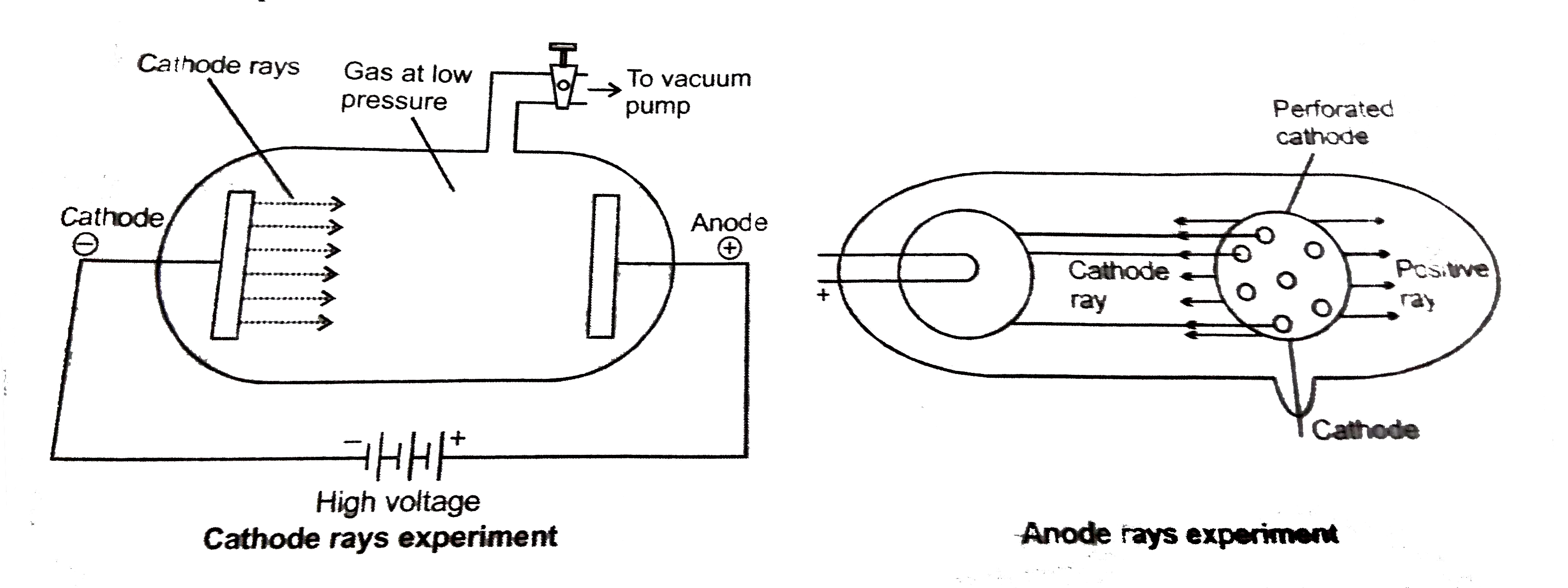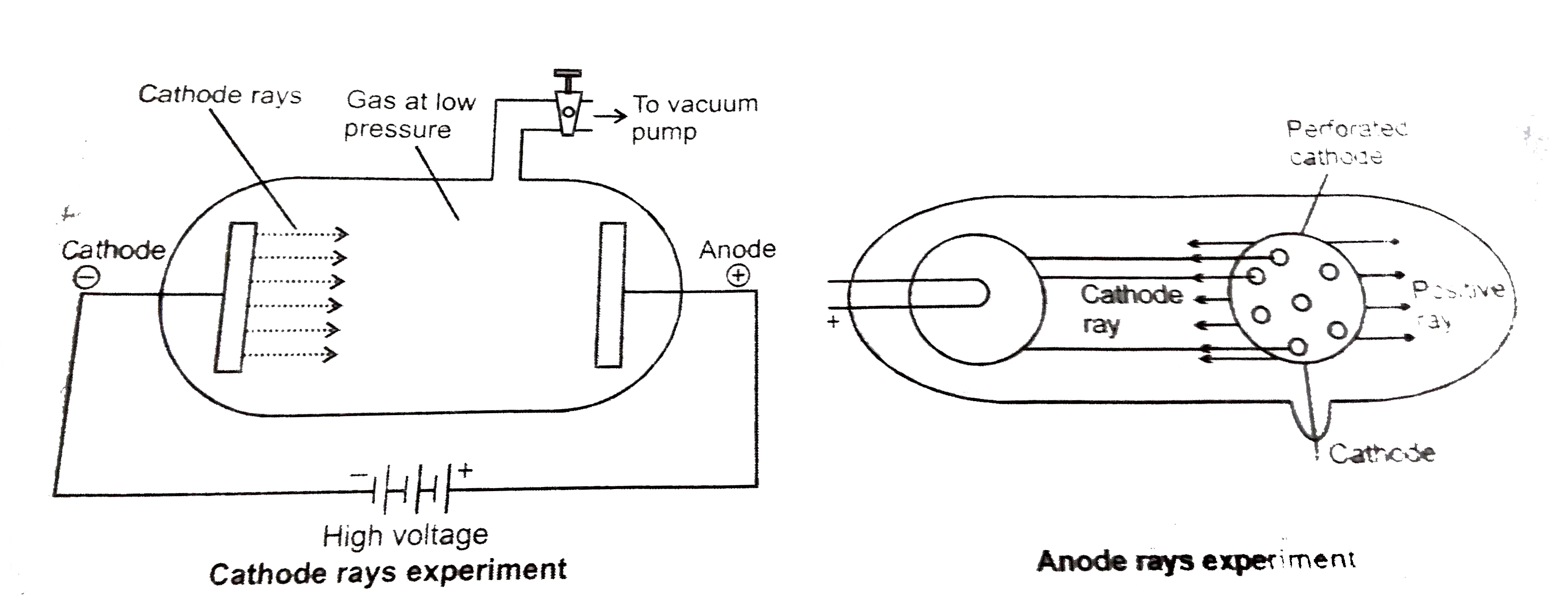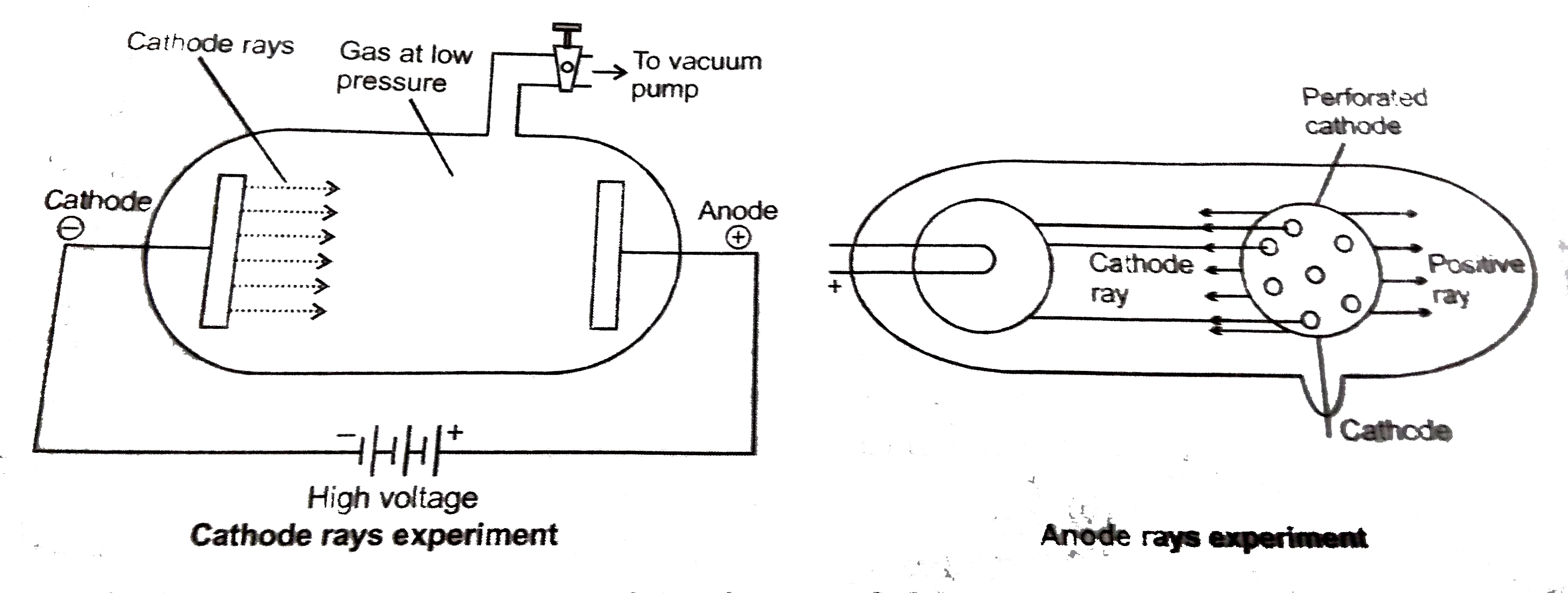The e/m value for cathode rays depends upon the nature of the gas taken in the discharge tube.
To solve the question regarding the dependence of the e/m value for cathode rays on the nature of the gas taken in the discharge tube, we can break down the explanation into clear steps:
1. Understanding Cathode Rays:
- Cathode rays are streams of electrons emitted from the cathode in a vacuum tube. They are negatively charged particles.
2. Definition of e/m Ratio:
- The e/m ratio refers to the charge-to-mass ratio of the particles. For cathode rays, this is typically associated with electrons. However, in certain conditions, ions can also be produced in the discharge tube.
3. Role of the Gas in the Discharge Tube:
- When a gas is introduced into the discharge tube, it can ionize when subjected to the electric field created between the cathode and anode. This ionization produces positive ions and electrons.
4. Variation of Charge and Mass:
- The e/m value can change depending on the type of gas used. Different gases have different atomic or molecular masses and can produce ions with varying charges. For example, if a heavier gas is used, the mass of the resulting ions will be greater, affecting the e/m ratio.
5. Conclusion:
- Therefore, the e/m value for cathode rays does indeed depend on the nature of the gas taken in the discharge tube because the ions produced (which can also contribute to the overall charge and mass in the system) will vary based on the gas used.
Summary:
The e/m value for cathode rays is influenced by the type of gas in the discharge tube due to the variation in the charge and mass of the ions produced from different gases.
- Cathode rays are streams of electrons emitted from the cathode in a vacuum tube. They are negatively charged particles.
- The e/m ratio refers to the charge-to-mass ratio of the particles. For cathode rays, this is typically associated with electrons. However, in certain conditions, ions can also be produced in the discharge tube.
- When a gas is introduced into the discharge tube, it can ionize when subjected to the electric field created between the cathode and anode. This ionization produces positive ions and electrons.
- The e/m value can change depending on the type of gas used. Different gases have different atomic or molecular masses and can produce ions with varying charges. For example, if a heavier gas is used, the mass of the resulting ions will be greater, affecting the e/m ratio.
- Therefore, the e/m value for cathode rays does indeed depend on the nature of the gas taken in the discharge tube because the ions produced (which can also contribute to the overall charge and mass in the system) will vary based on the gas used.
The e/m value for cathode rays is influenced by the type of gas in the discharge tube due to the variation in the charge and mass of the ions produced from different gases.
Topper's Solved these Questions
- STRUCTURE OF ATOMBOOK - ICSECHAPTER - STRUCTURE OF ATOMEXERCISE - Fill in the Blanks Type Questions
20 Videos
- STRUCTURE OF ATOMBOOK - ICSECHAPTER - STRUCTURE OF ATOMEXERCISE - Assertion-Reason Type Questions
6 Videos
- STRUCTURE OF ATOMBOOK - ICSECHAPTER - STRUCTURE OF ATOMEXERCISE - Objective (MCQ) TYPE Questions
67 Videos
- STATES OF MATTER : GASES AND LIQUIDSBOOK - ICSECHAPTER - STATES OF MATTER : GASES AND LIQUIDSEXERCISE - NCERT TEXT-BOOK EXERCISES (With Hints and Solutions)
23 Videos
- THE s - BLOCK ELEMENTSBOOK - ICSECHAPTER - THE s - BLOCK ELEMENTSEXERCISE - NCERT TEXT-BOOK. EXERCISES (WITH HINTS AND SOLUTIONS)
55 Videos
Similar Questions
A : The charge to mass ratio of the particles anode rays depends on nature of gas taken the discharge tube .
R : The particles of anode rays carry positive charge
View SolutionThe existence of negatively charged particle in an atom was shown by J.J. Thomson as a result of the studies of the passage of electricity through gases at extremely low pressure known as discharge tube experiments. When a high voltage of the order of 10,000 volts or more was impressed across the electrodes, some sort of invisible rays moved from the negative electrode to the positive electrode these rays are called as cathode rays.

Cathode rays travel in straight path in absence of electrical and magnetic field . Cathode rays consist of material part and charged particles? Cathode rays produce X-rays and light is emitted when they strike on ZnS screen. Cathode rays penetrate through thin sheets of aluminium and other metals . They affect the photogenic plate and passes heating effect when they strike on metal foil. The raito of charge to mass i.e charge/mass is same for all the cathode rays irrespective of the gas used in the tube.
The existence of positively charged particle in an atom was shown be E. Goldstein. He repeated the same discharge tube experiments by using a perforated cathode. It was observed that when a high potential difference was applied between the electrodes, not only cathode rays were produced but also a new type of rays were produced simultaneoulsy from anode moving towards cathode and passes through the holes or canal of the cathode. These termed as canal rays or anode rays.
These rays travel in straight lines and consists of positively charged particles. These rays have kinetic energy and produces heating effect also. The e/m ratio of these rays is smaller than that of electrons. Unlike cathode rays, their e/m value is dependent upon the nature of the gas taken in the tube. These rays produced flashes of light on ZnS screen and can pass throughs thin metal foils. They can produce physical and chemical changes and are capable to produce ionisation in gases.
For cathode rays the value of e/m:
View Solution
Knowledge Check
Assertion : The characteristics of cathode rays do not depend upon the material of electrodes and the nature of the gas present in the cathode ray tube.
Reason : Cathode rays consist of negatively charged particles, called electrons.AIf both assertion and reason are true and reason is the correct explanation of assertion.BIf both assertion and reason are true but reason is not the correct explanation of assertion.CIf assertion is true but reason is false.DIf both assertion and reason are false.
The existence of negatively charged particle in an atom was shown by J.J. Thomson as a result of the studies of the passage of electricity through gases at extremely low pressure known as discharge tube experiments. When a high voltage of the order of 10,000 volts or more was impressed across the electrodes, some sort of invisible rays moved from the negative electrode to the positive electrode these rays are called as cathode rays.

Cathode rays travel in straight path in absence of electrical and magnetic field . Cathode rays consist of material part and charged particles? Cathode rays produce X-rays and light is emitted when they strike on ZnS screen. Cathode rays penetrate through thin sheets of aluminium and other metals . They affect the photogenic plate and passes heating effect when they strike on metal foil. The raito of charge to mass i.e charge/mass is same for all the cathode rays irrespective of the gas used in the tube.
The existence of positively charged particle in an atom was shown be E. Goldstein. He repeated the same discharge tube experiments by using a perforated cathode. It was observed that when a high potential difference was applied between the electrodes, not only cathode rays were produced but also a new type of rays were produced simultaneoulsy from anode moving towards cathode and passes through the holes or canal of the cathode. These termed as canal rays or anode rays.
These rays travel in straight lines and consists of positively charged particles. These rays have kinetic energy and produces heating effect also. The e/m ratio of these rays is smaller than that of electrons. Unlike cathode rays, their e/m value is dependent upon the nature of the gas taken in the tube. These rays produced flashes of light on ZnS screen and can pass throughs thin metal foils. They can produce physical and chemical changes and are capable to produce ionisation in gases.
Which is not true with respect to cathode rays?
View SolutionThe existence of negatively charged particle in an atom was shown by J.J. Thomson as a result of the studies of the passage of electricity through gases at extremely low pressure known as discharge tube experiments. When a high voltage of the order of 10,000 volts or more was impressed across the electrodes, some sort of invisible rays moved from the negative electrode to the positive electrode these rays are called as cathode rays.

Cathode rays travel in straight path in absence of electrical and magnetic field . Cathode rays consist of material part and charged particles? Cathode rays produce X-rays and light is emitted when they strike on ZnS screen. Cathode rays penetrate through thin sheets of aluminium and other metals . They affect the photogenic plate and passes heating effect when they strike on metal foil. The raito of charge to mass i.e charge/mass is same for all the cathode rays irrespective of the gas used in the tube.
The existence of positively charged particle in an atom was shown be E. Goldstein. He repeated the same discharge tube experiments by using a perforated cathode. It was observed that when a high potential difference was applied between the electrodes, not only cathode rays were produced but also a new type of rays were produced simultaneoulsy from anode moving towards cathode and passes through the holes or canal of the cathode. These termed as canal rays or anode rays.
These rays travel in straight lines and consists of positively charged particles. These rays have kinetic energy and produces heating effect also. The e/m ratio of these rays is smaller than that of electrons. Unlike cathode rays, their e/m value is dependent upon the nature of the gas taken in the tube. These rays produced flashes of light on ZnS screen and can pass throughs thin metal foils. They can produce physical and chemical changes and are capable to produce ionisation in gases.
Select the incorrect statement.
View SolutionThe value of kf depends on nature of
View SolutionCanal rays produced when hydrogen atoms are taken in the discharge tube constitutes
View SolutionThe value of K does not depends upon pressure.
View SolutionHow many of the following statement are true about the cathode rays?
(i) Path of travelling is straight from the cathode with a very high velocity as it produces shadow of an object placed in its path
(ii) Rays consist of material particle.
(iii) They deflect towards negative end of the electrode.
(iv) They produce yellow glow when the glass will beyond anode.
(v) Cathode rays penetrate through thin sheets of aluminium and metals.
(vi) They affect the photographic plates
(vii) The ratio of charge (e) to mass (m) i.e. charge//mass is same for all cathode rays irrespective of the gas used in the tube. e/m=1.76×1011Ckg−1
(viii) Cathode rays are visible at low voltage.
View SolutionConsider the following two statements A and B and identify the correct choice in the given answer
A : The characteristic X-ray spectrum depends on the nature of the material of the target
B : The short wavelength limit of continuous X-ray spectrum varies inversely with the potential difference applied to the X-rays tube
View Solution
